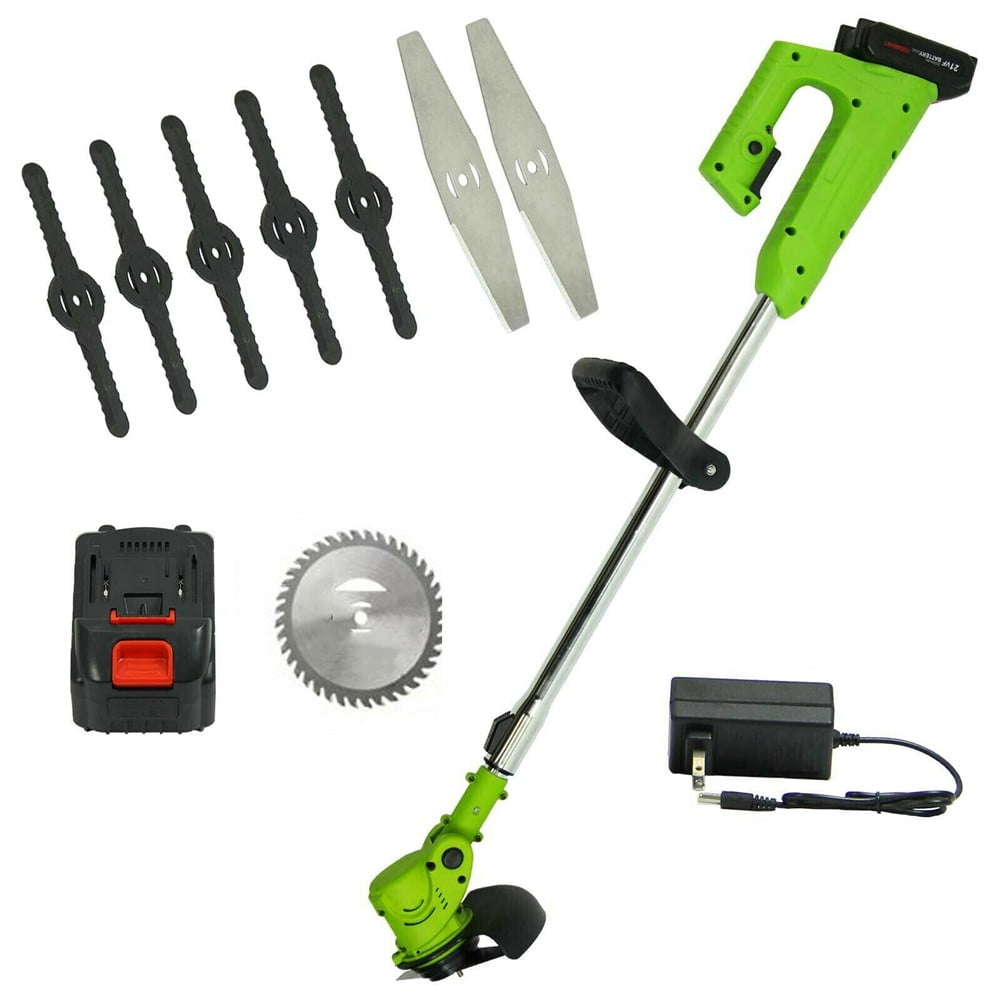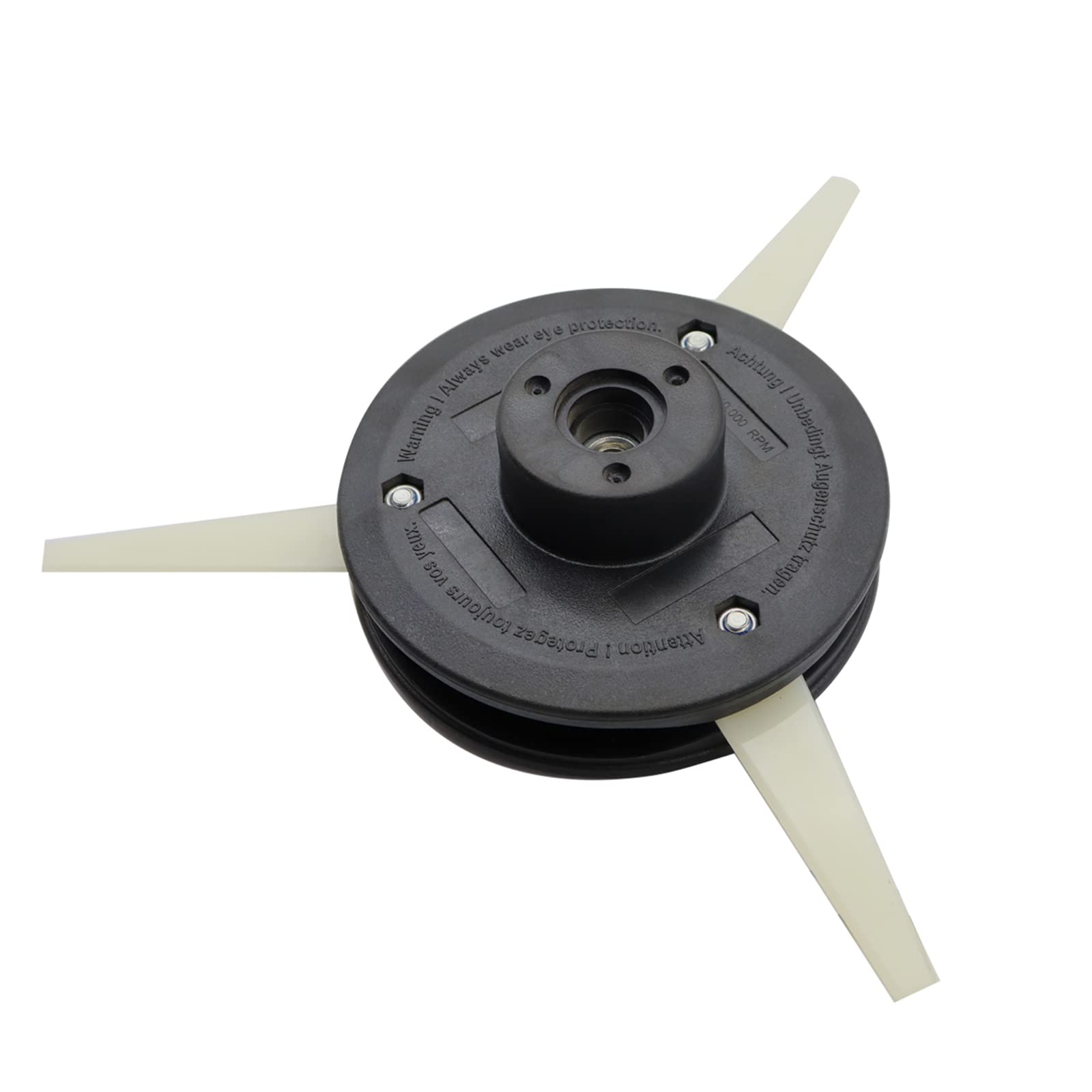Weed Eaters With Blades: The Ultimate Guide To Cutting Through Tough Weeds
Weed Eaters with Blades: The Ultimate Guide to Cutting Through Tough Weeds
Weed eaters are a versatile tool that can be used for a variety of yardwork tasks, from trimming grass to edging walkways. But what if you need to cut through tough weeds? That's where weed eaters with blades come in.
Weed eaters with blades are a more powerful option than weed eaters with string trimmers. They can cut through thicker weeds and vegetation, making them a better choice for larger yards or areas with a lot of tough weeds.
In this guide, we will discuss the benefits of using weed eaters with blades, as well as the different types of blades available. We will also provide tips on how to choose the right blade for your needs and how to use it safely.
Benefits of Using Weed Eaters with Blades
There are several benefits to using weed eaters with blades. First, they are more powerful than weed eaters with string trimmers. This means that they can cut through thicker weeds and vegetation with ease.
Second, weed eaters with blades are more durable. The blades are made of metal, so they are less likely to break or snap than string trimmers. This makes them a better choice for areas with a lot of tough weeds.
Third, weed eaters with blades are more versatile. They can be used for a variety of yardwork tasks, including trimming grass, edging walkways, and clearing brush.
Types of Blades for Weed Eaters
There are several different types of blades available for weed eaters. The type of blade you need will depend on the type of weeds you are trying to cut.
- Straight blades: Straight blades are the most common type of blade for weed eaters. They are a good choice for cutting through general weeds and vegetation.
- Curved blades: Curved blades are designed to cut through thicker weeds and vegetation. They are a good choice for areas with a lot of tough weeds.
- Saw blades: Saw blades are designed to cut through brush and other thick vegetation. They are a good choice for clearing paths or trails.
How to Choose the Right Blade for Your Needs
When choosing a blade for your weed eater, there are a few factors you need to consider. First, you need to consider the type of weeds you are trying to cut. If you are mostly cutting general weeds, a straight blade will be a good choice. If you are cutting thicker weeds or vegetation, a curved blade or saw blade will be a better choice.
Second, you need to consider the size of the blade. Larger blades will cut through thicker weeds more easily, but they will also be more difficult to control. If you are not comfortable using a larger blade, you may want to choose a smaller blade.
Finally, you need to consider the type of weed eater you have. Some weed eaters are designed to use specific types of blades. Make sure to check the owner's manual for your weed eater to see what types of blades are compatible.
How to Use Weed Eaters with Blades Safely
Weed eaters with blades can be dangerous if they are not used properly. Here are a few safety tips to keep in mind:
- Always wear safety glasses when using a weed eater with blades.
- Be aware of your surroundings and avoid cutting anything that you do not want to cut.
- Do not use a weed eater with blades if you are tired or not feeling well.
- Keep the blades sharp to prevent them from breaking.
Conclusion
Weed eaters with blades are a powerful and versatile tool that can be used for a variety of yardwork tasks. By choosing the right blade for your needs and using it safely, you can keep your yard looking its best.
If you're looking for a weed eater with blade, you've come to the right place. Garden Wiki is the leading online retailer for weed eaters, and they have a wide selection of models with blades to choose from. Whether you're looking for a gas-powered weed eater, an electric weed eater, or a battery-powered weed eater, they have something for everyone.
In addition to their wide selection of weed eaters, Garden Wiki also offers a variety of other helpful resources, such as buying guides, product reviews, and instructional videos. So whether you're a seasoned pro or a first-time weed eater user, you're sure to find everything you need at Garden Wiki.
Check out Garden Wiki today for more information about weed eaters with blades!
FAQ of weed eater with blade
Q: What is a weed eater with a blade called?
A weed eater with a blade is also known as a string trimmer with a blade, a brush cutter, or a weed whacker with a blade. It is a garden tool that uses a spinning blade to cut through weeds, brush, and other vegetation.
Q: What are the advantages of using a weed eater with a blade?
Weed eaters with blades are more powerful than string trimmers and can cut through thicker vegetation. They are also more durable and can last longer. Additionally, blades can be more effective at cutting through tough weeds and brush that would be difficult to cut with a string trimmer.
Q: What are the disadvantages of using a weed eater with a blade?
Weed eaters with blades are more dangerous than string trimmers. The blades can easily cut through skin and clothing, so it is important to use them with caution. Additionally, blades can be more difficult to control than string trimmers, so they are not as suitable for trimming around objects or in tight spaces.
Q: When should I use a weed eater with a blade?
Weed eaters with blades are best used for cutting through thicker vegetation, such as weeds, brush, and saplings. They are also a good choice for clearing large areas of vegetation. However, it is important to use them with caution, as they can be dangerous.
Q: How do I use a weed eater with a blade safely?
Here are some safety tips for using a weed eater with a blade:
- Always wear safety glasses and gloves when using a weed eater with a blade.
- Be aware of your surroundings and avoid cutting anything that you do not want to cut.
- Use a slow speed when trimming around objects or in tight spaces.
- Stop the weed eater immediately if you hit something hard.
Image of weed eater with blade
- Image 1: A gas-powered weed eater with a metal blade. The blade is attached to a rotating shaft that is powered by the engine. The weed eater is being used to cut through thick weeds and grasses.

- Image 2: An electric weed eater with a plastic blade. The blade is attached to a rotating shaft that is powered by an electric motor. The weed eater is being used to trim around flower beds and sidewalks.

- Image 3: A dual-blade weed eater. This weed eater has two blades that rotate in opposite directions. This makes it more effective at cutting through thick weeds and grasses.

- Image 4: A curved-blade weed eater. This weed eater has a blade that is curved on one side. This makes it more effective at cutting around corners and edges.

- Image 5: A flail-head weed eater. This weed eater has a head that is filled with flails. The flails are small, rotating blades that are very effective at cutting through thick weeds and grasses.

Post a Comment for "Weed Eaters With Blades: The Ultimate Guide To Cutting Through Tough Weeds"